A Higher Level of Education Leads to Lousy Vision!

In a study published in the journal of the American Academy of Ophthalmology, more than 50% of college graduates were nearsighted. This finding was in sharp contrast with the less than 25% of study participants, without a high school education, who were nearsighted. While genetics are known to play a role in vision, this study of 5000 people demonstrated a stronger correlation between environmental conditions and nearsightedness. To the point: the more reading and computer work you do, the greater the chance that you’ll be in need of glasses!
While it’s unlikely that your children put down their iPad or iPhone this summer, the odds are good that the amount of reading and computer work they will do on a daily basis is about to increase as the new school year gets underway. There are some things you can do to improve comfort and minimize the impact that these tasks can have on both your vision and your child’s vision now and in the future.
The Physiology of Reading: Our eyes have a built-in magnifying lens. When tiny muscles within the eye flex, they allow this magnifying lens to change shape and focus, enabling us to see the fine print. The other remarkable mechanism in the eye, which allows for hours of Facebook perusing, is the pupil. The pupil is the opening to the eye, through which light passes to reach the retina, beginning the process of vision. When we read, the pupil constricts, helping to focus light at the back of the eye.
Now consider for a moment the last time your teenager used his iPad for the period of an hour. Imagine during that time instead, he had held a 10-pound weight in his right hand with his arm held at a right angle. How long do you think he would have lasted comfortably without having to relax and set the weight down? -Certainly not an hour. Considering the amount of work required of the muscles in our eyes to maintain clear focus while doing homework or completing an 8-hour workday, it’s easy to understand how we might have trouble staying focused and comfortable.
The Do of Reading:
Do Take Breaks. Introducing the 20/20/20 Rule: Every 20 minutes, for 20 seconds, look 20 feet away. Allow the muscles in your eyes to relax.
Do Remember to Blink. It is well known that prolonged reading and computer use results in less blinking and more incomplete blinking. This affects the clarity and comfort of your vision.
Do Limit Tablet Time. Doing so may prevent or slow the progression of nearsightedness.
Do Add the Anti-Reflective Coating to Your Glasses. Anti-reflective coatings can limit the amount of high-energy light (blue light from your computer screen or fluorescent overhead lighting) that reaches the back of your eye. This impacts visual comfort, clarity, and can even impact sleep patterns!
Do remove your glasses for nearsightedness when reading. Discuss this with your doctor first, but often, in nearsighted people, reading without glasses is less stressful on the visual system and can slow the rate of prescription progression.
Do wear the proper glasses for the proper task. This rule is particularly true for adults wearing bifocals. Often the prescription that works for everyday use is not the best prescription for long hours of computer use. Ask your doctor about computer glasses, and again DO NOT forget the anti-reflective coating!
Do ask your doctor about how a specific type of eyeglass lens or contact lens can slow the progression of your child’s nearsightedness!
The Bottom Line: Encourage your child to go for the gold and get that graduate degree, but follow these simple tips to ensure that the glasses he’s wearing aren’t thicker than the textbooks he’s reading!
For more information about your eyes, follow our blog at: https://www.seavieweyecare.com/knowledge/blog/





